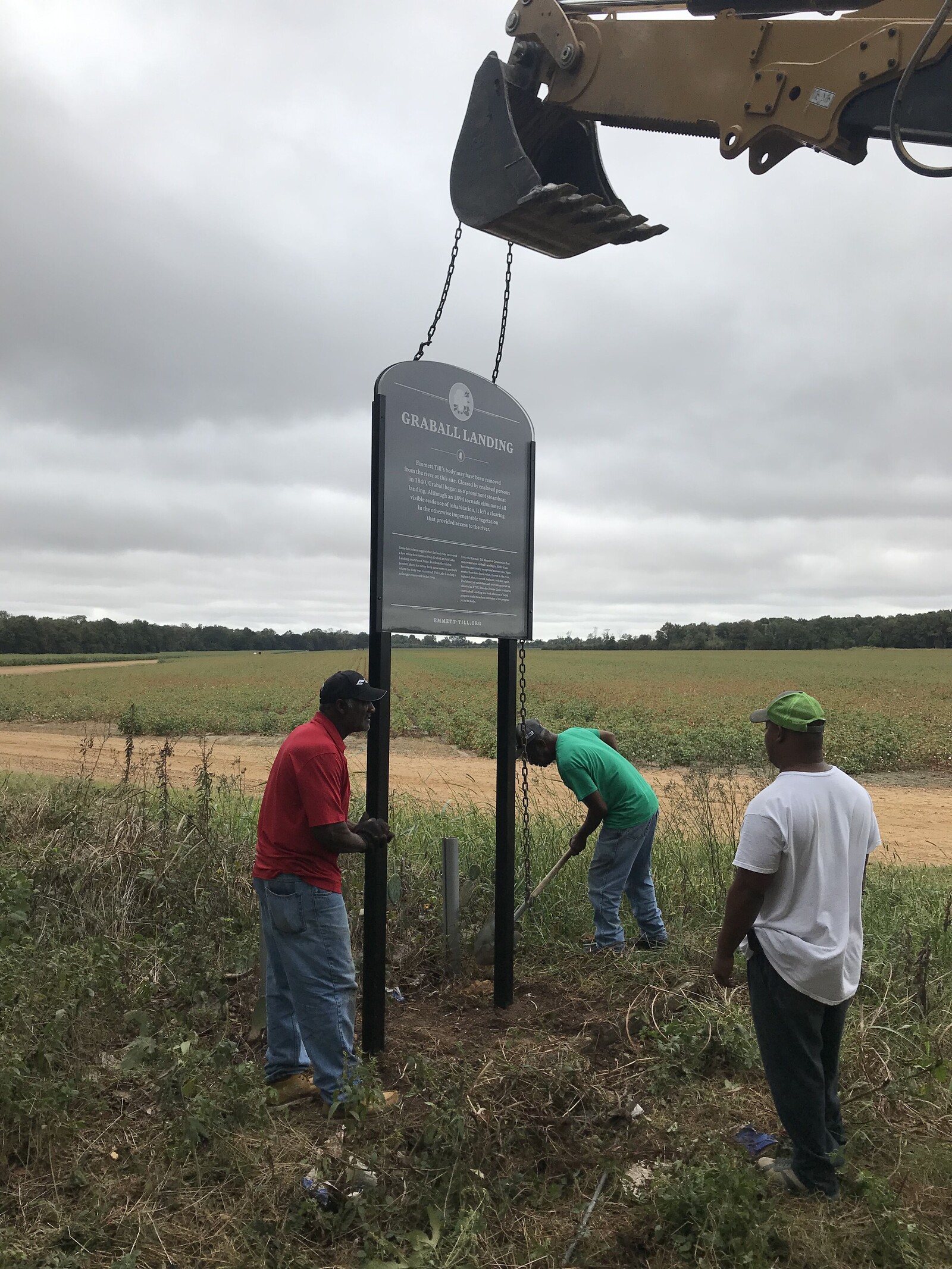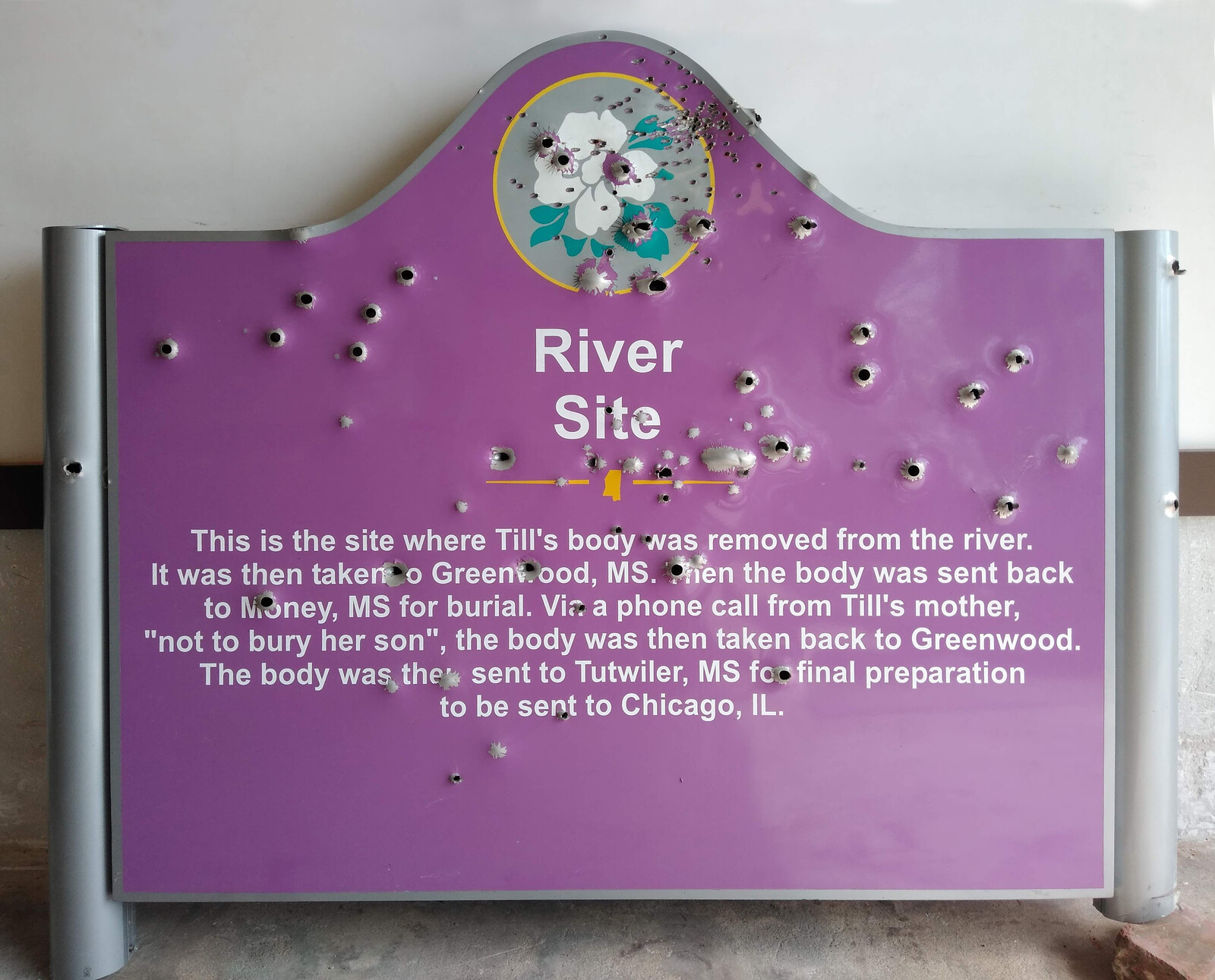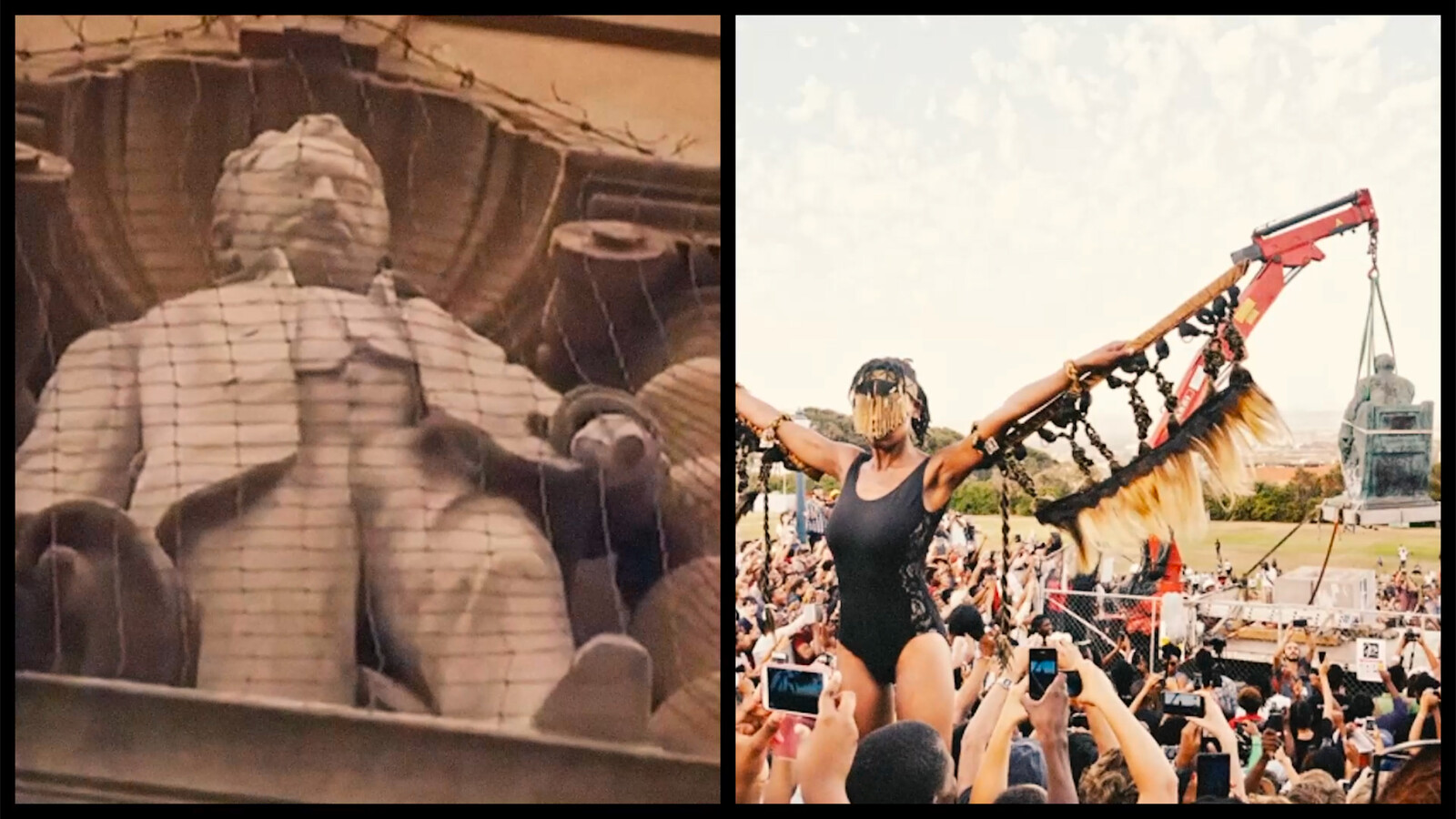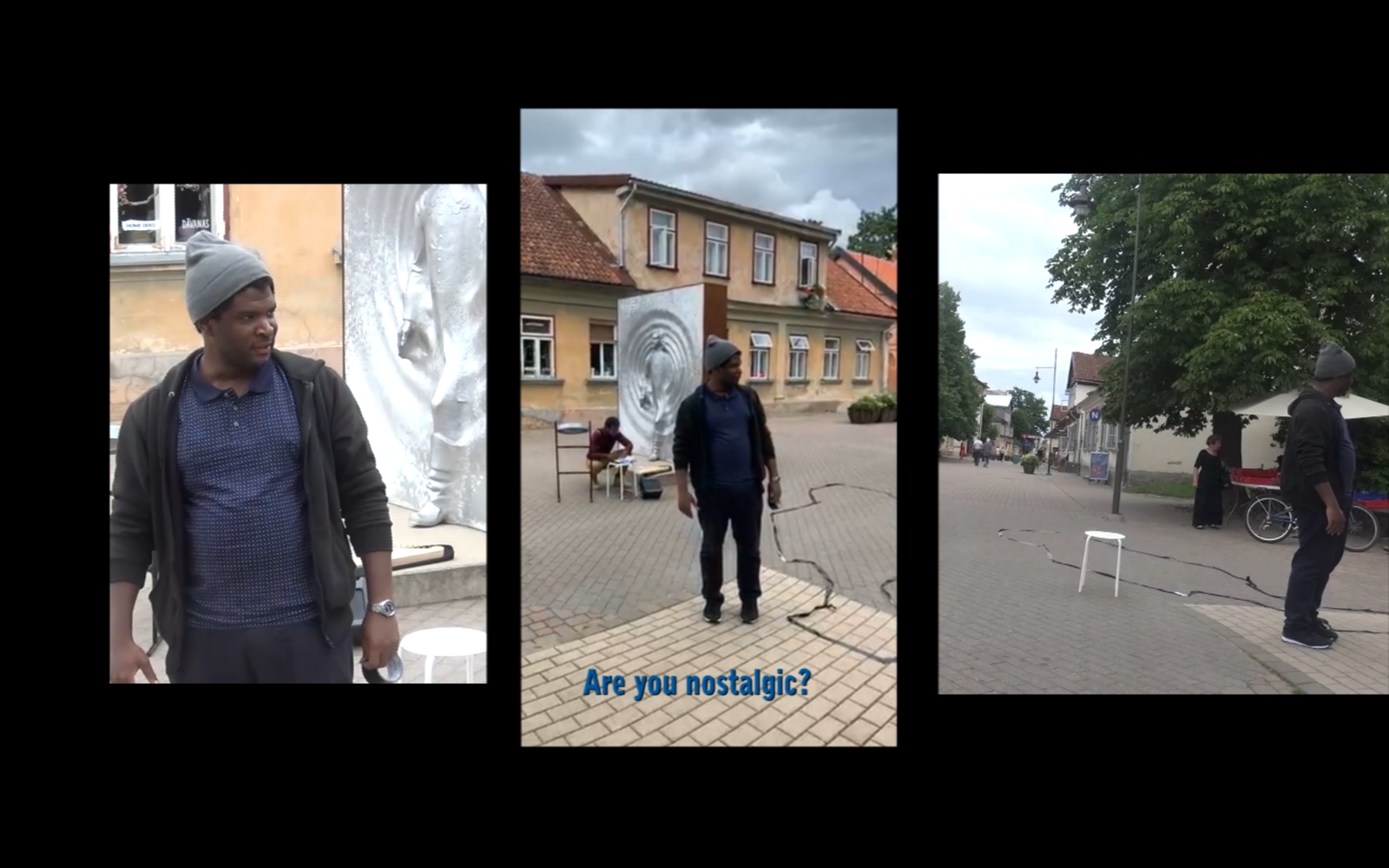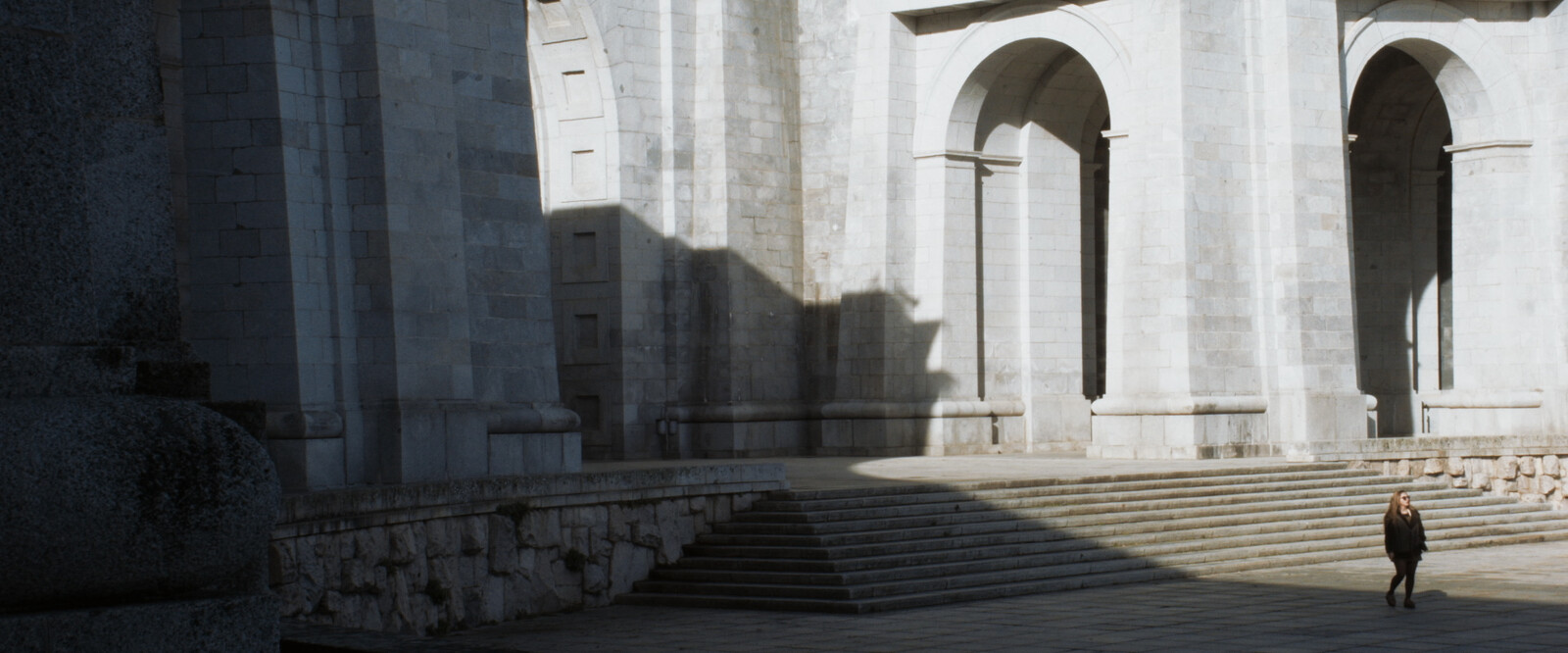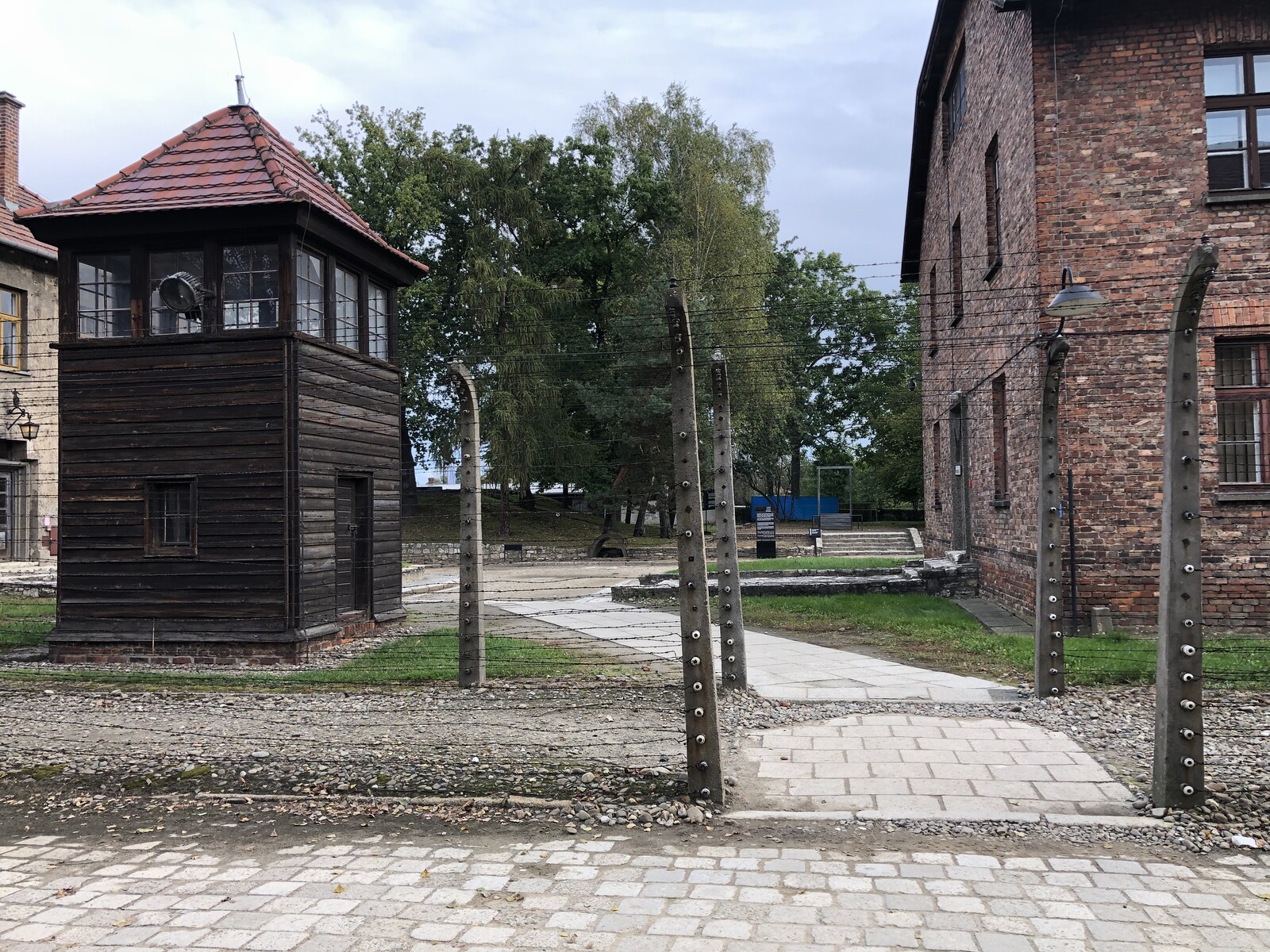In October 2019, along a dusty stretch of a back road in northwestern Mississippi, workmen and activists installed a historical marker, the fourth one erected on this particular site. The workers sunk the heavy marker into the ground near a clearing called Graball Landing adjacent to where each year rows of cotton plants sprout their puffy white bolls ripe for harvest. The marker weighed over five hundred pounds. This was a consequence of its composition of half-inch-thick AR 500 steel sandwiched between three-quarter-inch Plexiglas panels to make it bulletproof. The unusual use of abrasion-resistant steel, a type of metal commonly used to withstand the punishing impact of mining and construction operations—as well as the force of bullets discharged on gun ranges—was necessitated by the historical event the marker commemorates: it marked the site where the mutilated corpse of Emmett Till was allegedly dragged out of the murky depths of the nearby Tallahatchie River.
While remote, the historical site has attracted unwarranted vandalism. Sometime in early 2019, for instance, three white University of Mississippi fraternity brothers posed proudly, one cradling a shotgun and another holding an AR-15 assault rifle, alongside their prey: the bright purple, bullet-riddled historical marker that identified one location—Graball Landing—along the trail of Till’s murder. The sign functioned as a fitting backdrop for a rite of passage into the fraternity of white supremacists.1 That marker, the third one, replaced a second memorial placard removed in 2016 because it had been repeatedly pockmarked by a combination of 317 bullets and shot gun pellets. Vandals stole and tossed the first sign placed in 2008 into the Tallahatchie River. Other markers, placed by the Emmett Till Memorial Commission (ETMC), the intrastate Civil Rights Trail organization, and other Alabama state organizations to designate important sites of Till’s lynching, have also been pocked with bullets or repeatedly defaced. This new marker, with its Plexiglass enclosure, is designed to resist the impact of bullets while also registering these racially motivated acts of vandalism. It serves as a record of past and ongoing anti-black violence.
The marker remembers Emmet Till, a fourteen-year-old African American boy, who had been abducted and killed by two white vigilantes in the summer of 1955. The ruthless execution made national headlines when his mother Mamie Till Mobley (then Till Bradley) insisted upon an open casket at his funeral that exposed the barbaric murder of her son. The haunting images of the disfigured child and the devastating documentation of his grieving mother, photographed by David Johnson and published in Jet Magazine, stunned the nation. Taken together—the bulletproof commemorative marker and the images of Till—reveal how anti-black violence has and continues to influence who gets to tell historical narratives in the nation’s public spaces, especially in the Southern cities where thousands of monuments to the mythic “Lost Cause,” the failed effort to constitute the Confederate States of America, have created a tyrannical commemorative landscape.
The new commemorative marker at Graball Landing narrates that dark moment in American Civil Rights history for those who visit: “Emmett Till’s body may have been removed from the river at this site. Cleared by enslaved persons in 1840, Graball began as a prominent steamboat landing. Although an 1894 tornado eliminated all visible evidence of inhabitation, it left a clearing in an otherwise impenetrable vegetation that provided access to the river.” Even though its location is along a dirt road, the new marker acknowledges its history of violence: “signs erected here have been stolen, thrown in the river, replaced, shot, removed, replaced and lost again. The history of vandalism and activism centered on this site led ETMC founder Jerome Little to observe that Graball Landing was both a beacon of racial progress and a trenchant reminder of the progress yet to be made.”
The backwoods location of Graball Landing in the Mississippi Delta typifies the South’s geography of small towns and farming communities where racial violence ensured enslaved Africans dutifully harvested acres of cotton. Their labor power, coerced through physical violence or “depravation and deprivation,” as Alex Weheliye names, made the Deep South’s planter class wealthy and fed the cotton industries of nineteenth century New England and Great Britain.2 After the Civil War, the clandestine terror of the Klu Klux Klan, in concert with the organized theft of the right to vote and own property, crippled the political and economic prospects of newly emancipated Black citizens. To survive, albeit a meager existence, Black farmers raised cash crops like cotton, sugar, rice, and tobacco on land rented from former plantation owners. They also had to rent equipment and buy seed from white land owners, who charged high prices to keep farms in a cycle of debt peonage. This exploitive system tethered Black families to an impoverished sharecropping landscape, where many lived in shacks no better than those under slavery. “We are walled in by cotton,” is how novelist Richard Wright described the black farmer’s plight. “Trapped by the plantation system, we beg bread of the Lords of the Land and they give it to us; they need us to work for them.”3 Later, midcentury politically-enfranchised and white-run Citizen’s Councils in southern towns directly attacked civil rights organizers fighting to put an end to segregation through systematic intimidation. In the Jim Crow era—spanning from post-Reconstruction beginning in 1878 to the Civil Rights Acts of 1965 and 1966—white Southerners actively worked to diminish black progress and devalue black life.
One of the most lethal and effective forms of intimidation by mobs of white citizens, often surreptitiously sanctioned by elected officials, law courts, and police officers, was lynching—the violent murder of men, women, and children, like the fourteen-year-old Till. In these public spectacles of vigilante justice without trial, white Americans hung their black victims in public squares, from bridges, and from trees at the outskirts of towns. Lynchings took place from end of the Civil War through to the early 1960s in communities from Louisiana to Illinois, from Kansas to Maryland, though the majority occurred in twelve southern states.4 The unlawful events attracted hundreds of people, including families eager to witness the hanging, shooting, burning, and dismemberment of those accused of anything that white citizens imagined as upsetting rigid racial dictates, including the act of merely existing. Gleeful witnesses snatched body parts as grisly mementoes and crowds posed for photographs in front of disfigured corpses. Since the dehumanization of black people into commodities has been foundational to the formation of racial capitalism, enterprising photographers sold and circulated lynching images as postcards—memorable events integral to the Southern way of life.
Angry white mobs justified the lynching of thousands of black men and boys as the meting out of swift justice and a means of protecting the dignity and honor of white wives and daughters. By comparison, as black muckraking journalist Ida B. Wells documented in the late nineteenth century, the rape of black women and girls by white men—violent acts that were part of a long history of slave owners asserting mastery—typically went unpunished.5 Because white Southerners controlled the government and courts—primarily through routine voter suppression in the form of polling tests, taxes, and threats of violence—black residents were unable to bring vigilantes who carried out these crimes and murders to justice. These regimes of racial terror ensured that black Americans would stay impoverished, without power, and on the other side of the tracks.
On that fateful day of August 24, 1955, Carolyn Bryant, a twenty-one-year-old white woman, falsely claimed that the young Till had made a sexually explicit gesture while visiting Bryant’s Grocery Store with friends to purchase candy. The Bryants made a living by selling provisions to black sharecropper families in the town of Money, Mississippi. Incensed by the child’s alleged behavior—which had transgressed the codes of racial segregation that kept local black residents in fear, but more importantly in their place—Bryant’s husband and brother-in-law kidnapped Till, who was in the area visiting family while on holiday from his Chicago home. After the two men snatched Till from his uncle’s home in the dead of night, they viciously beat and shot the teenager at a nearby barn. The two murderers using barbed wire along with a seventy-five-pound fan from a cotton gin weighed down and disposed of his body in the Tallahatchie River. The men hoped the silty flows of river would carry away any trace of their calculated murder of the innocent young boy.
Born in Webb, Mississippi in 1921, about thirty miles north of Money, Mamie Carthan left the impoverished Mississippi Delta for Illinois with her parents when she was two years old. Her family joined the great migration out of the dead-end sharecropping economy to seek better work and a better life in the industries of the North. Mamie married twice, but chose to raise her son Emmett on her own in Chicago’s South Side—a bustling black segregated enclave that sociologists Horace Cayton and St. Clair Drake described as “eight square miles of land [where] a Black Metropolis was growing in the womb of the white.”6 Though Mamie Till Mobley was born in the Southern Black Belt, she settled in its north doppelgänger, the Black Belt of Chicago, with its own histories of segregation, economic exploitation, substandard housing, and riots instigated by white mobs.
In the summer of 1955, Till Mobley sent her young son Emmet on a train south to stay with her uncle Moses Wright in Money. Tensions in the South and anger among Whites had escalated after the recent supreme court ruling Brown v. Board of Education in 1954 that made racially segregated schools illegal. Believed to be under siege, white southerners vowed to defend their territory, their political and economic dominance, and the Southern way of life, as they had in the Civil War, through collective acts of intimidation and terror against their black neighbors. Till Mobley would never see her son again after she bid him farewell. Once she heard the news of his murder, she refused to let her son be buried in Mississippi and instead insisted his remains be sent back to Chicago. Upon viewing his body, which could only be identified by the silver ring he wore, she collapsed.
Twice married to difficult and at times abusive men, Till Mobley was a working mother raising a young son on her own. As such, she did not easily fit into respectability’s template of virtuous black womanhood. That fact did not curtail her quest for the world to also mourn her loss. In a bold act of defiance, she refused to quietly grieve and insisted upon making visible the aftermath of the racist lynching of her son. She contacted The Chicago Defender and the locally-headquartered offices of Ebony and Jet magazines, all three of which had wide national readerships. At her son’s memorial services, Till Mobley arranged with the funeral home to have an open casket. Thousands of Chicagoans came to pay respects, but also witness white supremacy’s unrelenting project to dehumanize and destroy black lives. Johnson’s gripping photographs of the funeral published in Jet showed young Till’s unrecognizable face and his mother wracked by grief.
The photographers, Till Mobley, and the images’ viewers entered into what Ariella Azoulay calls a “civil contract,” one that overrode pity, empathy, shame, or compassion in order for Till Mobley to become a “participant citizen” with others in a “rehabilitated” public sphere.7 She had refused for her or her son to be made invisible in the racist public sphere of Jim Crow America. She instinctively understood that justice for her son’s lynching would not be swift, if it would ever arrive, and that her son’s murders might never be convicted. Indeed, one month later in September 1955, an all-white all-male jury in Sumner, Mississippi took five days to acquit Roy Bryant and J. W. Milam of Till’s murder. Another all-white grand jury in Leflore County, where Till’s body was retrieved from the river, refused to indict the two men for kidnapping.
As these white jurors entered and exited the courthouses, their defiance of the law was in part validated by sentiments of the “sacrifice,” “brave deeds,” and “eternal glory” in defending the Southern way of life that were also symbolized by confederate monuments standing outside Tallahatchie and Leflore County courthouses. Both erected by the United Daughters of the Confederacy in 1913 with the full support of municipal governments, the women commissioned artists to embellish these beaux-art-styled white marble obelisks with weeping wives and mothers, honorable soldiers, and brave officers to historicize and recuperate the nobility of antebellum Southern values.
Despite their confession of his kidnapping and murder in an article in the January 1956 issue of Look magazine, for which they were paid the sum of $3,000, Bryant and Milam were seen as defending the honor of his wife and never punished for taking the life of Emmet Till. These events proved that racial terror had not abated after the Civil War and Emancipation ended slavery. They also proved that justice was unattainable for black Americans. The failure to convict Till’s murderers only further galvanized activists of the burgeoning Civil Rights movement.
Under Jim Crow segregation, Black Americans like Till Mobley and her family found themselves marginalized and excluded in the public spaces that shape the political, economic, and social life of towns and cities especially in the South. De facto and de jure segregation limited or prevented access to all types of public spaces—courthouses, markets, schools, theaters, museums, swimming pools, restrooms, hair salons, waiting rooms, hospitals, auditoriums, cemeteries, cinemas, and parks. Blacks sought temporary occupation of mainstream public spaces, such as world fairs and expositions, or established their own counter-public spaces in segregated black communities.8 Civil rights boycotts, marches, and sit-ins to reclaim the right to be in public space was a proxy war for the right to be fully enfranchised Americans.
With these limitations, the economic precarity wrought by racial capitalism, and the constant threat of violence from aggrieved Whites—which riots and spates of bombings in cities like Chicago (1919) or towns like Tulsa, Oklahoma (1921) and Rosewood, Florida (1923) had proved—Blacks rarely erected permanent memorials and monuments honoring black history or historical figures. Thus, organizations like the Association for the Study in Negro Life and History (ASNLH) founded by Carter G. Woodson in 1915 worked with newspapers to institute Negro history week, for example, that popularized notable events and figures of black history. In the first half of the twentieth century, black Americans purchased and framed images of Sojouner Truth, Frederick Douglass, Booker T. Washington and W. E. B. DuBois to display in their homes and businesses. To raise the historical consciousness of black Americans was a project that the labor, civil rights, and black nationalist movements of all stripes saw as integral to the fight against structural racism’s devastating impact on black life. Therefore, Mamie Till Mobley turning to the press, to the photographic image to expose anti-black racism’s deadly enactment and memorialize the death of her son, falls within a long history of how black Americans utilized alternative forms to engage in memory work, or as Christina Sharpe suggests “wake work,” when denied access to mainstream public spaces.9
Despite the profound sorrow wrought from losing her only child, despite her disenfranchisement of rights and justice dictated by the same regime of white supremacy that had murdered her son, despite a hostile American public sphere, Mamie Till Mobley undertook two radical actions. One, she refused the terms that would have rendered her grief invisible and grievances inconsequential. Two, she mobilized the black counter-public sphere to demand justice. The photographs of Till’s wake and funeral circulated in the black press, then in the mainstream media, to expose the brutality of racial prejudice unchecked by the law. But more significantly, Till Mobley utilized the contractual nature of the photograph to actualize what Azoulay identifies as anchoring spectatorship in civic duty “toward the photographed persons who have not stopped being there, toward dispossessed citizens who in turn, enable the rethinking of the concept and practice of citizenship.”10 Under Jim Crow segregation, Till Mobley was excluded from public spaces and discourse by the violence that underwrites white America’s hegemony. It is therefore vital to understand how she combined one of photography’s earliest functions to commemorate the deceased with photography’s civil contract to construct a lasting public memorial of her son Emmet Till, one that demanded justice.
Till Mobley’s photographic memorial acknowledges the legacy of racial terror in ways that the commemorative markers at Graball Landing, at the Sumner County Courthouse, and at the ruins of Bryant’s Market—the latter two erected by the Mississippi Department of Archives and History—cannot, especially in a public domain still governed by that same anti-black violence. In the midst of writing this essay in early November 2019, a group of six men and two women all dressed in black polos and khakis—the uniform of the League of the South, a documented white supremacist group—gathered around the new Till marker at Graball Landing. The apparent leader stated for the two women filming the stunt “we are all here at the Emmett Till monument that represents the civil rights movement for Blacks.” Standing between the Mississippi state flag that bears in its design a confederate stars and bars and the flag of the League of the South, the unidentified man asks “what we all want to know is where are all the white people?” An ear-piercing alarm filled the air and scattered the group who fled in their vehicles. Aware that the new marker would continue to attract vandals and hate groups, ETMC installed an alarm and cameras at the site. As documented by the Southern Poverty Law Center, members of the League of the South have been posing in front of Civil Rights sites in cities like Selma, Alabama and Little Rock, Arkansas and posting them online as a recruitment tool.11 This is but one of many racist groups and individuals, like the Ole Miss frat boys, who symbolically enact and perpetrate violence against monuments to black history—one form of racial violence routinely unleashed against black peoples to reaffirm their racial superiority.
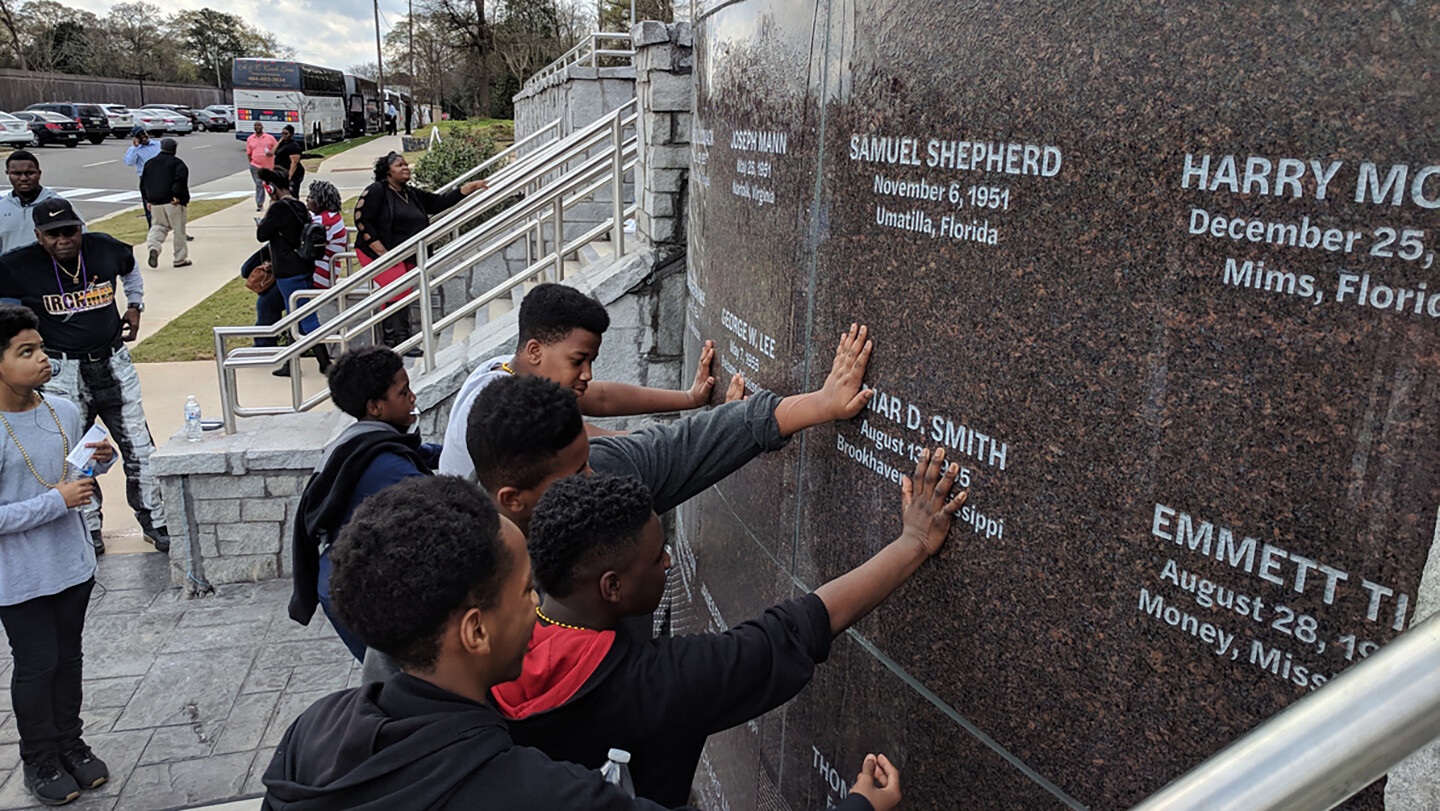

The new Monument for victims of racial terror during the 1950s, at the Equal Justice Initiative’s Peace and Justice Memorial Center in Montgomery, Alabama. Photo by EJI.
Three hundred miles east of Graball Landing, in Montgomery, Alabama, a new monument at the Equal Justice Initiative’s (EJI) Peace and Justice Memorial Center honors Emmet Till along with twenty-three other victims killed by racial violence in the 1950s. To aid the public in comprehending the historic and geographic scope of racial terror, the new monument, along with the nearby National Memorial to Peace and Justice, designed by Mass Design, recognizes the 4,424 documented victims of lynching during the Jim Crow era. In collaboration with groups around the country who seek to publicly recognize lives lost to and those impacted by organized racial violence, the EJI has also launched the Community Remembrance Project that places historical markers at lynching sites around the nation. Like the Till marker at Graball Landing, the EJI markers remind local residents of the acts of lynching whose perpetrators were rarely brought to trial, and if so were never convicted for their actions like Till’s murderers.
The EJI, a private non-profit organization, took up this civic task of making visible the history of lynching and its legacy in mass incarceration amid Montgomery’s heritage landscape, one that dutifully honors confederate presidents and generals but has remained silent, for example, about those sites where its lucrative slave trade transpired. As a consequence of not being a municipal endeavor, the new EJI’s memorials were built on a site south of the city’s historic civic center. While it is not obvious or noted by most visitors as they enter the National Memorial to Peace and Justice, a secure entry point and fence encloses the six-acre site, a condition rarely found at memorials or monuments erected in public spaces or on public land. The enclosure of the fence signals, like the Plexiglas-enclosed bullet-proof historical marker at Graball Landing, that violence in the name of white supremacy continues to shape the spaces of America’s commemorative landscape.
Coda
The symbolic expression of white supremacy through the erection of monuments in counties like Tallahatchie and Leflore demarcated where Black Mississippians under Jim Crow’s prohibitions could or could not venture. These worked in concert with the pre-civil rights racial assemblages of substandard houses, segregated public amenities, redlining of neighborhoods, systemically low wages, the terror of the Klan, and the violence law enforcement to diminish the prospects of Black life. That tyranny, the violence of the State in service of the private interests of racial capitalism, which operated through the spatial logics of enclosure, is what Achille Mbembe has labeled as “necropolitics,” a recalibration of Michel Foucault’s “biopolitics” wherein the modern State apparatus became the arbiter of what conditions allow some lives to thrive and under what conditions others deteriorate and die. In America’s “necropolis,” death continues to haunt those disenfranchised from the rights of citizenship—rights to “life, liberty, and the pursuit of happiness”—which defines the public domain and includes domestic sphere whose social order of privacy is also defined and delineated by the law. The most recent call to make Black lives matter addresses this ongoing policing of public spaces by law enforcement and white vigilantes who have murdered, often with the same impunity of Till’s killers, Black men, women, and children while in everyday acts of walking down the street, standing on a sidewalk, playing in the park, driving a car, shopping in Walmart, or merely sleeping in one’s own home.
It is important to recognize that the necropolis of the United States is vast and its violence is structural. It permeates systems like healthcare, which is ideally designed to ensure a thriving and productive society. In Black communities across the US, the lack of access to healthcare, to fresh air, to clean water, or to healthy foods works to incrementally reduce the life expectancy of Black Americans. The novel coronavirus, for example, opportunistically continued the devastation of Black life in the wake of slavery, the crippling segregation of Jim Crow, and current regime of mass incarceration. Mississippi, for example, maintains the worst healthcare system in the nation.12 As of September 2020, Mississippi’s Black residents made up 37.5% of the state’s population, but comprised 49.8% of Covid-19 infections and 48.6% of its deaths.13 These remain the deadly inequities of America’s public sphere for those who struggle to live within its everyday spaces.
Jerry Mitchell, “We Found Photos of Ole Miss Students Posing with Guns in Front of a Shot-Up Emmett Till Memorial. Now They Face a Possible Civil Rights Investigation,” ProPublica, July 25, 2019, ➝.
Alex Weheliye, Habeus Viscous: Racializing Assemblages, Biopolitics, and Black Feminist Theories of the Human (Durham: Duke University Press, 2014), 39.
Richard Wright, 12 Million Black Voices (New York: Basic Books, 2008), 49.
Equal Justice Initiative, Lynching in America: Confronting the Legacy of Racial Terror (Montgomery: Equal Justice Initiative, 2017), ➝. https://lynchinginamerica.eji.org/report/
See Ida B. Wells, Southern Horrors: Lynch Law in All Its Phases (New York: The New York Age, 1892). “At least one hundred fifty women were lynched and thousands more assaulted by white mobs in the American South between 1880 and 1965, the majority occurring before 1930.” Crystal N. Feimster, Southern Horrors: Women and the Politics of Rape and Lynching (Cambridge: Harvard University Press, 2011), 158.
Horace R. Cayton, Jr. and St. Clair Drake, Black Metropolis: A Study of Negro Life in a Northern City (New York: Harcourt, Brace and Co., 1945), 80.
Ariella Azoulay, “Introduction,” Civil Contract of Photography (Cambridge: Zone Books, 2008), 16–17.
See Mabel O. Wilson, Negro Building: Black Americans in the World of Fairs and Museums (Berkeley: University of California Press, 2012).
See Christina Sharpe, In the Wake: On Blackness and Being (Durham: Duke University Press, 2016).
Azoulay, Civil Contract of Photography, 17.
“League of the South Resorts to Video Stunts as Membership Declines,” Southern Poverty Law Center, November 5, 2019, ➝.
See the Commonwealth Fund’s rankings on healthcare state by state, ➝.
Mississippi Department of Health, ➝, September 28, 2020.
Monument is a collaboration between e-flux Architecture and Het Nieuwe Instituut.
